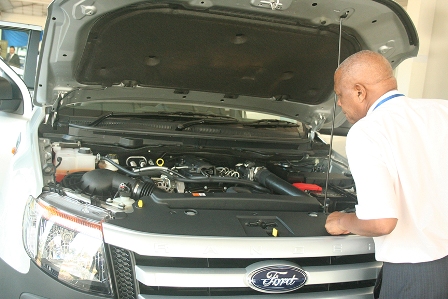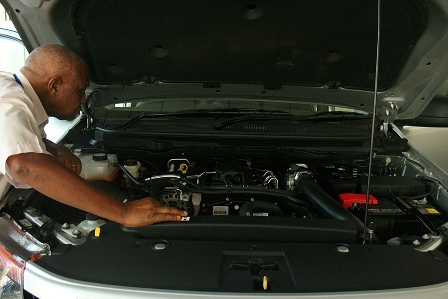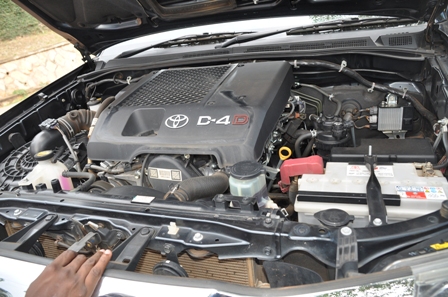
By Sejin Kim
Nothing is worse than missing work or being stuck in a parking lot without a ride home because your battery decided to die on you without notice. Over time, batteries begin to wear out and will need to be replaced. You can of course jump your battery if this happens to you, but wouldn’t it be easier to prepare ahead of time and avoid the trouble in the first place? Here are 6 steps you can take periodically to check your battery to determine whether it is worn out or not.
Step #1. Switch off your engine
First, make sure that your vehicle is turned off and the keys have been removed. This will ensure that no additional electricity is being drawn upon when you are underneath the car and that your vehicle’s engine won’t be operating and generating heat while you are under the bonnet.
Step #2. Open the bonnet

While you are inside the vehicle after having turned the car completed off, open up the bonnet of the vehicle. Check underneath the steering column or on the floor of the vehicle next to the driver’s door to look for a latch that will release the lock. If you can’t find it, consult with your vehicle manual to determine where the latch is located on your specific vehicle.
Step #3. Prop the bonnet open
Walk around to the front of the vehicle and reach your hand underneath the front-center of the bonnet to locate the release mechanism; pushing this will allow the bonnet to open up. Then grab the rod located inside the bonnet at the very front and use it to open the bonnet so that it doesn’t fall on you. If your vehicle doesn’t have a rod, grab something tall and skinny of your own that will keep the bonnet open while you inspect inside.
Step #4. Find the battery

Next, find the battery by locating the black box with two electrical cables attached to it. One cable should be red and one cable should be black. Sometimes cars have covers over the battery to protect it from elements. Usually the best place to find the battery is somewhere near the front and along one of the sides of the vehicle. Again, check your car owner’s manual if you are unable to find the battery at first glance.
Step #5. Visually assess the battery
First, look at the battery and try to determine if something looks off. This could include a breakage in one of the cables connecting the battery, leaking of fluid from the battery, discolorations, excessive amounts of white corrosion on the terminals, or bulges in the shell.
All of these could be potential signs that your battery is worn out and needs to be replaced. Take particular caution in touching the battery, especially if there is a broken cable. If you touch the two ends of cables together, or the battery short circuits through the broken cable, it could be fatal.
Step #6. Get an electrical reading
If there weren’t any visual signs of the battery being worn out, next you will want to check the electrical levels coming from the battery. This can be done by taking your battery into a local auto parts store for them to test it in a store, or you can buy a relatively inexpensive hand held device that will allow you to test your battery yourself.
If you do buy a handheld device, follow the instructions and attach the device’s cords to the battery terminals.
If the device reads 12.7-13.2 volts that generally means that the battery is 100% charged and that it is not worn out. If the battery is reading around 12.4 volts, then it is charged up to around 75%. Anything less and you should probably consider purchasing a replacement battery as your battery is worn out.

Leave a Reply